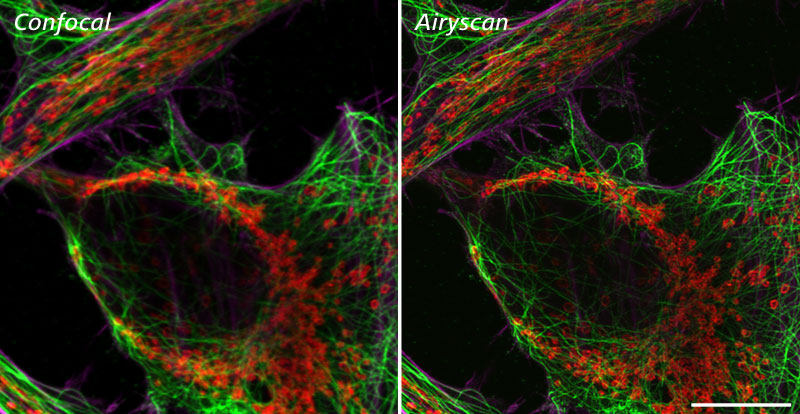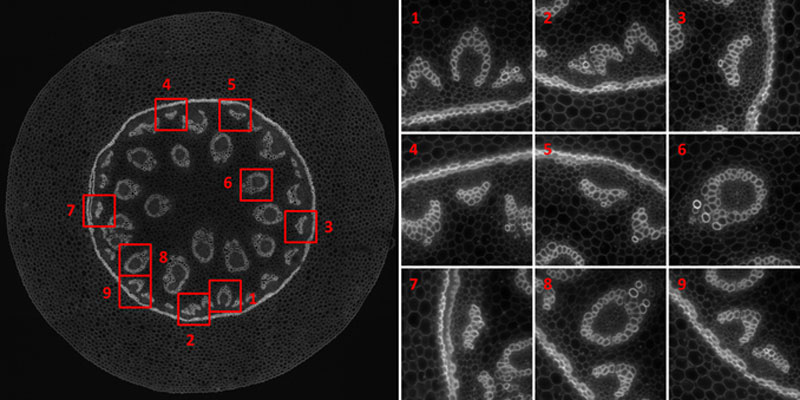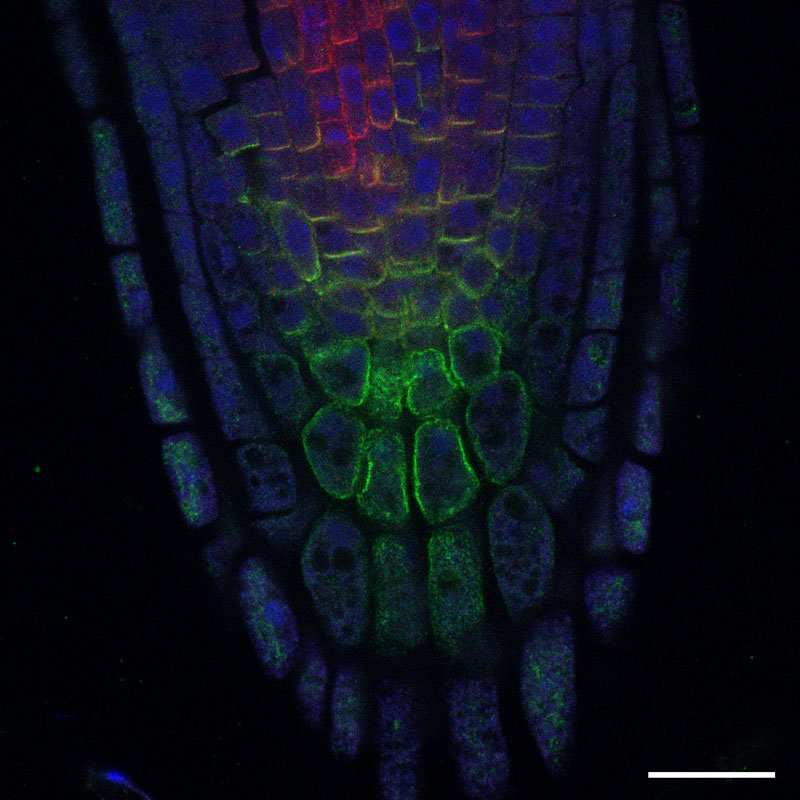|
|
 |
|
|
||||||||||||||||||||||||||||||||||||||||||||||||||||||||||||||||||||||||
|
|
||||||||||||||||
|
Plant root (Arabidopsis thaliana); |
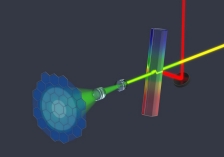 |
||||||||
|
Revolutionize Your Confocal Imaging with ZEISS Airyscan Airyscan is an array detector that draws on the fact that a fluorescence microscope will image a point-like source as an extended airy disk. When you close the pinhole in a standard confocal microscope to reject out-of-focus light, you get a sharper image, but it’s also dimmer since a great deal of light is then lost. The smaller the pinhole, the higher the resolution, but – equally – the bigger the loss in light. |
||||||||
|
Airyscan solves this conundrum between resolution and light efficiency by imaging the complete airy disk onto a concentrically arranged hexagonal detector array. It consists of 32 single detector elements, all of which act like sub airy unit pinholes. The confocal pinhole itself remains open and doesn’t block light – thus all photons of the whole airy disk are collected. The signals from all detector elements are then reassigned to their correct position, producing an image with increased signal-to-noise ratio and resolution. Unlike other superresolution techniques, Airyscan capitalizes on the scanning and optical sectioning capabilities of a confocal. Thus Airyscan even works with thicker samples such as tissue sections or whole animal mounts that need a higher penetration depth. |
||||||||
|
Airyscan detector, schematic beam path |
||||||||
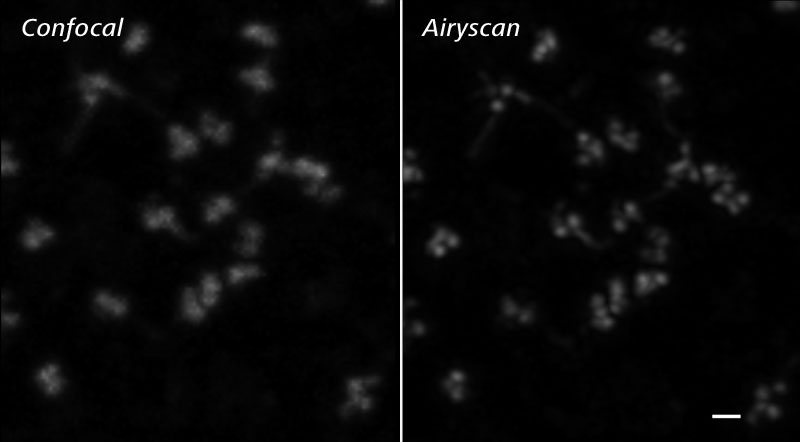 |
||||||||
|
Isolated centrioles of Chlamydia; |
|
Lukas Microscope Service, Inc. 25715 N. Hillview Court, Mundelein, IL. 60060 847-673-2600 |
|
established in 1931 all rights reserved |
